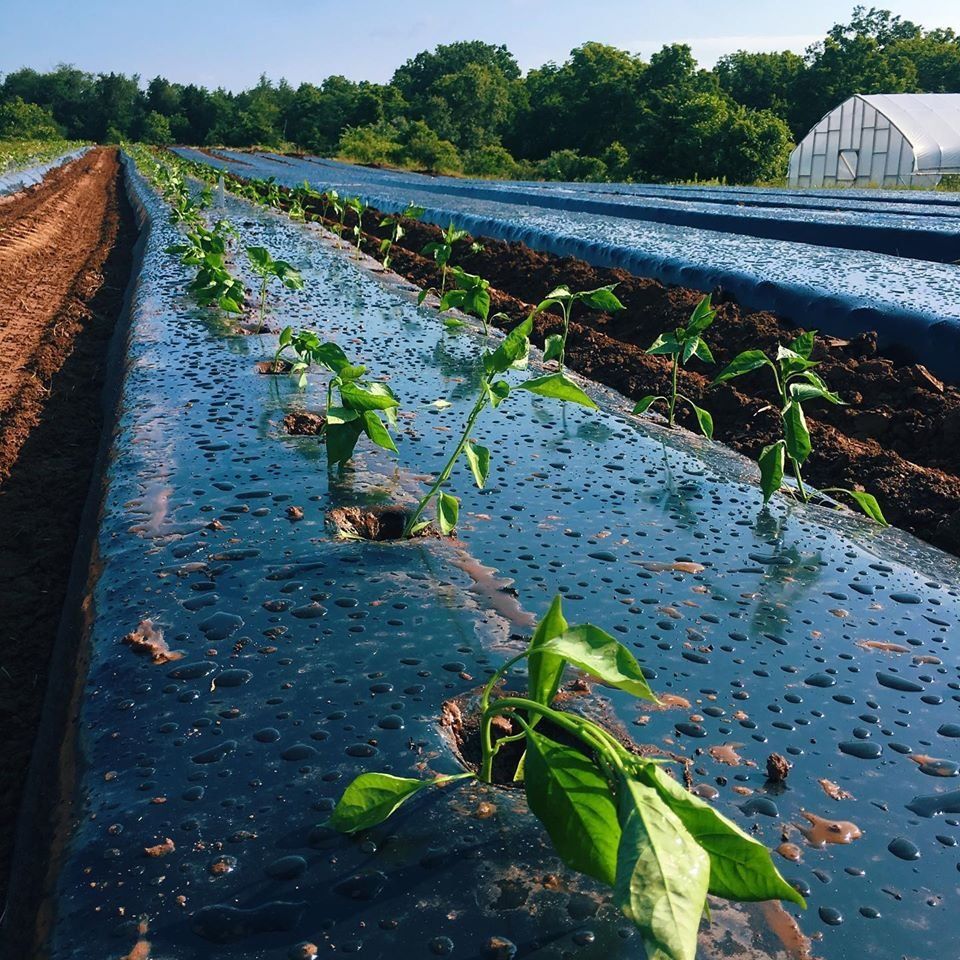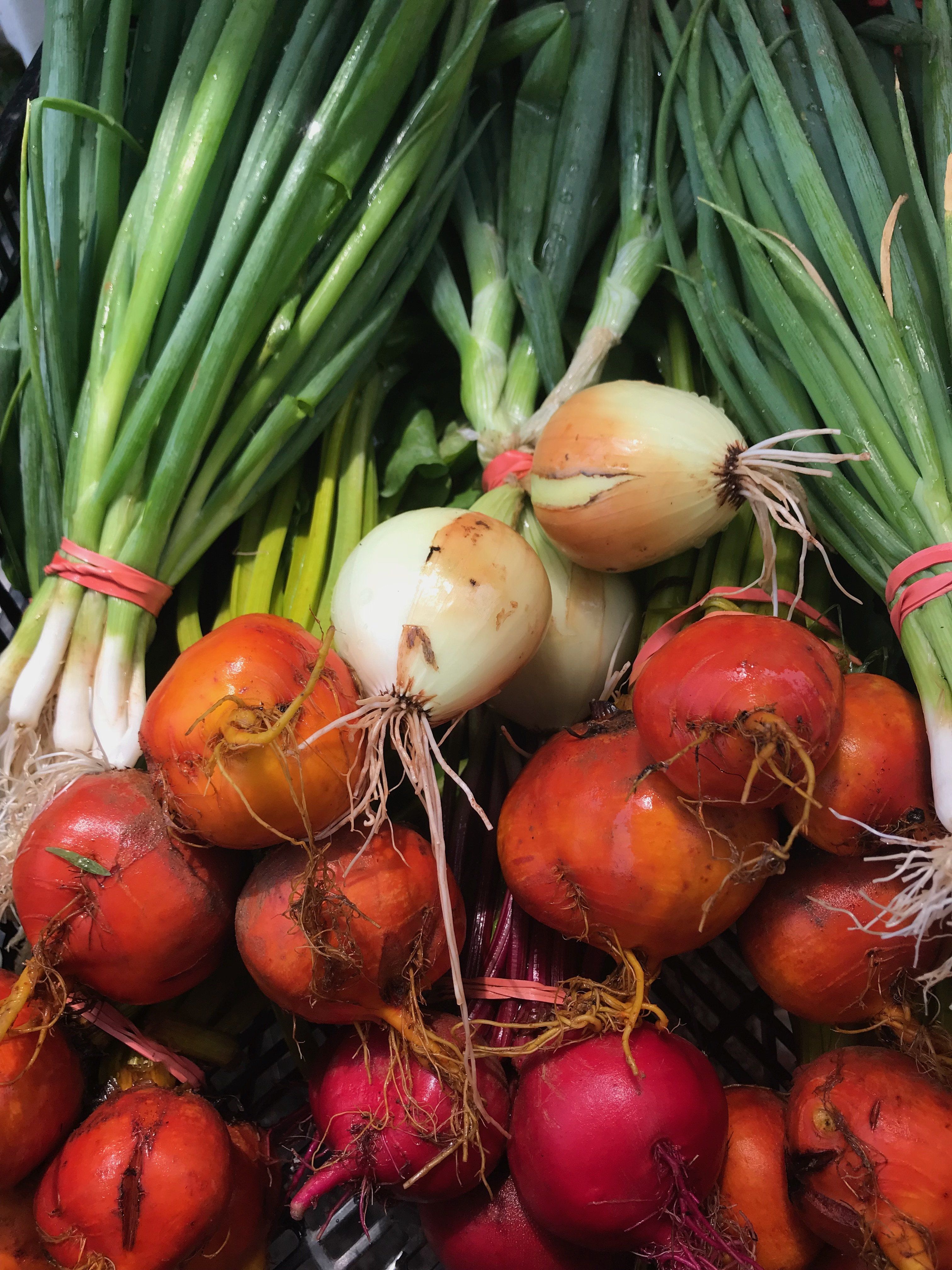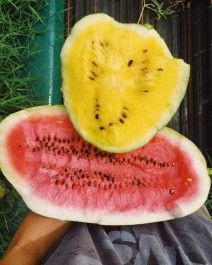There’s nothing quite like sinking your teeth into a beautifully ripe slice of watermelon and savoring that textbook bite of summer. There’s also nothing quite like cutting open the same watermelon and finding that it’s pale, and hard, and decidedly unready to eat. When we walk the fields and decide what to harvest for you each week, we are carefully checking for different signs in different crops to make sure that our timing is perfect.
Watermelons are a great example, because over the past years we’ve shown many of you our secrets for looking at a watermelon and knowing what’s going on inside the rind. You probably rap melons in the grocery store with your knuckles and listen for a hollow sound when you’re choosing which to take home. Maybe you also check the spot of discoloration on the skin where the melon rested on the ground, checking that it’s deepened from white to yellow. In the field, we can see that the tendrils connecting the melon to the vine have browned and dried. We know they’ll be ripe “about” 80 days from planting, but the difference between harvesting a melon on day 78 or day 82 can be tremendous!
Watermelon is critical to harvest at just the right time, because it will not continue to ripen off the vine. Cantaloupes, on the other hand, will ripen in our coolers and on your counters, just like tomatoes (and the peaches and apples from other farms that we share with you). On our farm, most of the produce needs to be carefully evaluated for harvest so that it’s at its peak and ready to eat when it reaches your kitchen. Cabbage and kale are easy: we can see and touch the portions that we cut at harvest to make sure everything is on track. Beans or peas can be checked for texture by snapping (and sometimes tasting). Tomatillos burst through their paper lanterns when they’re ready to eat. Beets, carrots, and other root crops are mostly evaluated for size, so once we see their shoulders in the soil line, we dig a few and see if they seem to be on track with what we’d like to send your way. Cucumbers, which we’re bringing in by the literal ton this year, ripen with such speed that they have to be checked daily; if left too long, they’ll become bitter. For many high summer veggies (including watermelon, cukes, eggplant, and peppers), the sheen of their skin is another secret sign of readiness.
The watermelons are nearing perfection- ready for picking this coming week. Cucumbers will be with us for a few weeks more. With the first harvest of tomatoes and eggplant and summer carrots, we’re seeing a rainbow on the pack line slowly take the place of spring's variegated greens.
Eat well and be well,
Ashley, Collin, John, Lex, Alexandra, James, Rory, and the hens, hogs, and dogs
Meal Plan Week #9
- Forget zucchini bread, we're now completely devoted to Peach Zucchini Muffins
- Save the rest of your peaches for this Peach and Tomato Basil Salad
- Andouille sausage adds a kick to this Summer Veggie Skillet Pasta
- The best hot dogs are topped with this coleslaw... Or, use your cabbage to make this German side with grilled sausage
- This Summer Leek Soup is light enough for hot weather
- Savor a homemade chili verde inspired dinner with Roasted Tomatillo and Chicken Bowls
- Dragon's Tongue beans look exotic and taste delicious with this simple recipe alongside a great steak
- Watermelon is perfect as is, but if you want to try something new, we recommend Watermelon Sorbet
** Pastured Meat Shareholders this week can expect a variety of chicken cuts, Willowsford andouille sausage and hot dogs, and flat iron steaks**




